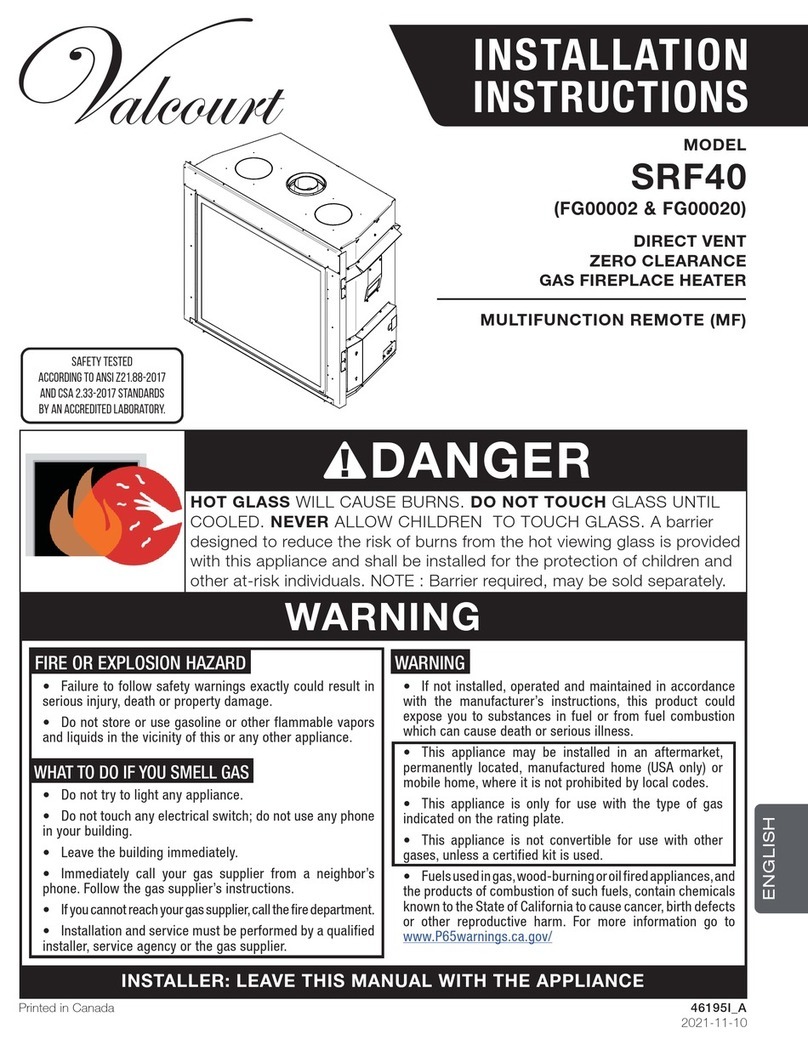
Heater model installaon and operaon manual
General Information
Specications
Fuel type Cordwood
Test standards (safety) ULC S627, UL 1482
Zone Heating - How to get the most of it
Your new heater wood stove is a space heater, which means it is intended to heat the area it is installed in, as well as spaces that
connect to that area, although to a lower temperature. is is called zone heating and it is an increasingly popular way to heat
homes or spaces within homes.
Zone heating can be used to supplement another heating system by heating a particular space within a home, such as a basement
family room or an addition that lacks another heat source.
Houses of moderate size and relatively new construction can be heated with a properly sized and located wood stove. Whole house
zone heating works best when the stove is located in the part of the house where the family spends most of its time. is is nor-
mally the main living area where the kitchen, dining and living rooms are located. By locating the stove in this area, you will get
the maximum benet of the heat it produces and will achieve the highest possible heating eciency and comfort. e space where
you spend most of your time will be warmest, while bedrooms and basement (if there is one) will stay cooler. In this way, you will
burn less wood than with other forms of heating.
Although the stove may be able to heat the main living areas of your house to an adequate temperature, we strongly recommend
that you also have a conventional oil, gas or electric heating system to provide backup heating.
Several factors will contribute to make zone heating benecial to you, including the right location and size of the heater, the size,
layout and age of your residence, as well as your climate zone. Second homes used over three seasons annually can generally be
heated with smaller stoves than homes heated throughout the winter.
e Benets of Low Emissions and High Performance
e low smoke emissions produced by the special features inside the heater’s rebox mean that your household will release up to
90 percent less smoke into the outside environment than if you used an older conventional stove. But there is more to the emis-
sion control technologies than protecting the environment.
e smoke released from wood when it is heated contains about half of the energy content of the fuel. By burning the wood com-
pletely, your stove releases all the heat energy from the wood instead of wasting it as smoke up the chimney. Also, the features inside
the rebox allow you to reduce the air supply to control heat output, while maintaining clean and ecient aming combustion,
which boosts the ecient delivery of heat to your home.
e emission control and advanced combustion features of your stove can only work properly if your fuel has an average moisture
content below 18 percent. See fuel section (page 6) of this manual for suggestions on preparing fuelwood and judging its moisture.
What is Your New Heater Made Of?
Steatite or soapstone is a natural stone quarried in the Province of Quebec in Canada. It contains the right mix of talc and magne-
tite to successfully store heat and withstand very high temperatures. As soapstone is inert, it is not hazardous to human health.
Vermiculite is used as rewall. It’s a mineral extracted from large mines in China, Russia, South Africa and Brazil. Potassium sili-
cate is used as a binder to form a rigid board. Vermiculite can withstand temperatures above 2000°F. It is not considered hazardous
waste. It is recommended to dispose of it in a landll.
e door and glass gaskets are breglass which is spun from melted sand. Black gaskets have been dipped into a solvent-free solu-
tion. Disposal at a landll is recommended.
5




























